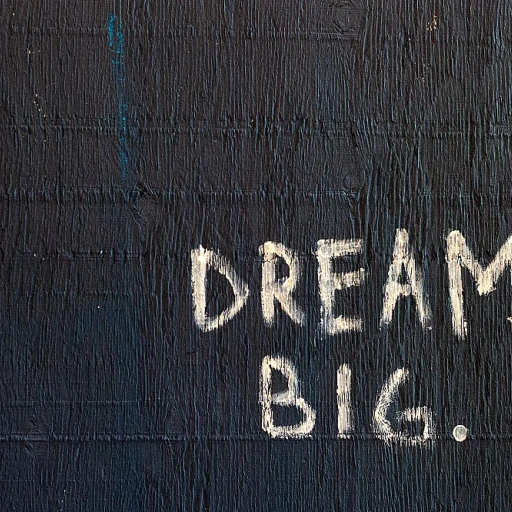Recognizing Ageism in Hiring Practices
Identifying Subtle Age Bias in Recruitment
Age discrimination in the workplace often begins at the hiring stage. Many employers, consciously or unconsciously, favor younger employees over older candidates. This bias can manifest in various forms, from job postings that subtly signal a preference for younger workers, to interview questions that indirectly assess a candidate's age.
For example, some companies may use phrases like "digital native" or "recent graduate" in job descriptions, which can discourage older workers from applying. These signs of age bias can be difficult to spot, but they contribute significantly to ageism in hiring practices.
The Impact of Age Stereotypes on Employment
Age stereotypes often lead to assumptions about an older employee's ability to adapt to new technologies or learn new skills. Employers might assume that older adults are less tech-savvy or unwilling to embrace change, which can unjustly influence hiring decisions. This type of age discrimination not only affects the chances of older workers securing employment but also perpetuates a cycle of bias in the workplace.
Moreover, the perception that younger workers are more energetic or innovative can lead to ageism, where older employees are overlooked for roles they are fully capable of performing. It's crucial for companies to recognize these stereotypes and work towards creating a more inclusive hiring process.
Legal Protections Against Age Discrimination
While many countries have employment laws designed to protect against age discrimination, such as the Age Discrimination in Employment Act (ADEA) in the United States, enforcement can be challenging. Employers must ensure their hiring practices comply with these laws to avoid potential legal repercussions. Understanding these legal frameworks is essential for both employers and employees to safeguard against age discrimination in the workplace.
Recognizing ageism in hiring practices is the first step towards creating a more equitable work environment. By addressing these biases, companies can ensure they are not only complying with the law but also fostering a diverse and inclusive workplace.
For more insights on how companies can address these issues, consider exploring the role of a Chief Impact Officer in HR tech.
Ageism in Career Advancement
Challenges Faced by Older Employees in Career Progression
Ageism is a hidden barrier that older employees often encounter when attempting to climb the career ladder. In many work environments, there is a prevailing misconception that older workers lack the adaptability and technological proficiency of their younger counterparts. This bias can lead employers to overlook them for promotions or deny them significant projects. Employers may unconsciously demonstrate age bias by attributing low energy, reluctance to learn, or resistance to change to older workers. These stereotypes can have real consequences, affecting not only the individuals' career growth but also contributing to a broader ageism workplace culture. Older adults may find themselves pigeonholed into roles that limit their professional development, undermining their potential. An example of ageism in career advancement is when a company consistently gives high-visibility assignments to younger workers, presuming they have more drive or fresher ideas. Such actions not only exemplify discrimination based on age but can also demoralize older employees who possess valuable industry experience and insight. To combat this, companies need to foster an inclusive environment where employees of any age are offered equal training opportunities and career progression pathways. Recognizing and addressing the signs of ageism is crucial. The steps employers take to eliminate age discrimination will help create a more equitable workplace where every employee, regardless of age, can thrive. For those interested in further exploring the dynamics of workplace ageism and how it intersects with career growth, "The Art of Human Resources: A Fresh Perspective" offers valuable insights and suggestions for navigating these challenges.The Role of Technology in Perpetuating Age Bias
The Influence of Digital Advancements on Age Bias
In today's rapidly evolving workplace, technology plays a crucial role in shaping employer-employee relationships. While innovations have streamlined hiring and operational processes, they can sometimes perpetuate age discrimination.
Technological platforms and tools, designed to enhance efficiency, may unintentionally favor younger workers. For example, the reliance on digital skills for many roles can disadvantage older employees. This can manifest in hiring practices where candidates are judged based on their familiarity with certain technologies rather than their holistic skill set.
Moreover, advanced algorithms used in recruitment often have inherent biases. When not properly calibrated, they may overlook the qualifications of older applicants, as these systems may prioritize speed and youthful trends. Such scenarios contribute to ageism in the workplace, inadvertently favoring younger employees over more experienced older workers.
Employer training opportunities should include awareness about these biases, encouraging fair employment practices. Recognizing technology's role in HR tech and implementing checks can significantly reduce age discrimination in workplaces. Fair access to digital resources and impartial evaluation of skills, irrespective of age, are fundamental for fostering an inclusive environment.
Impact of Ageism on Employee Well-being
The Detrimental Effects on Employee Health
The often-overlooked consequence of ageism in the workplace is its adverse impact on the well-being of employees. Discrimination based on age affects both older and younger workers, leading to psychological distress and decreased job satisfaction. Age bias can manifest in various forms, causing significant harm to mental health.- Stress and Anxiety: Older employees may experience stress from being overlooked for promotion or having their contributions undervalued. Similarly, younger employees might feel pressure to prove themselves in an environment that emphasizes experience over potential.
- Reduced Self-esteem: Continual exposure to age-based discrimination contributes to lowered self-esteem. Older adults facing bias in their company can start questioning their abilities, which impacts their performance.
- Burnout: Repeated instances of ageism can lead to employee burnout. When workers feel their value is linked solely to their age rather than their abilities, those feelings can escalate into disengagement from work altogether.
Impact on Physical Health
The effects of workplace ageism extend beyond mental health, influencing physical well-being as well. Research indicates a correlation between stress from age discrimination and adverse physical conditions.- Health Deterioration: The tension from bias, whether for younger or older employees, can lead to physical health issues, including high blood pressure and a weakened immune system.
- Workplace Absenteeism: Health issues related to ageism can increase absenteeism rates as workers take more sick leave to manage their conditions. This can further exacerbate the problem of age discrimination when employers unjustly equate absenteeism with inefficiency at work.
Legal Frameworks and Protections Against Ageism
Legal Safeguards and Protections for Various Age Groups
Age discrimination laws play a crucial role in safeguarding the rights of employees across different age groups. These laws are designed to protect against bias that affects not only older but also younger employees, ensuring that all workers have equal opportunities in the workplace.
One significant piece of legislation is the Age Discrimination in Employment Act (ADEA), which specifically shields employees aged 40 and above from discrimination based on age. The law mandates that companies cannot favor younger workers over older ones solely due to their age, creating a level playing field where the skills and experience of older workers are valued.
For employers, understanding and adhering to these laws is critical to avoid potential legal issues and promote a fair work environment. Implementing regular training on the signs of age discrimination for managers and HR professionals can help in identifying and addressing potential biases. Furthermore, fostering a culture that values diversity in age can enhance a company’s reputation and positively impact employee morale.
Notably, the European Union and many other regions have similar measures that prohibit employment discrimination based on age. These regulations ensure that employers provide equal access to job opportunities, career advancements, and training programs without bias or prejudice.
In terms of practical steps, companies should review their hiring processes, promotion criteria, and retention strategies to ensure compliance with age discrimination laws. By doing so, they can cultivate a workplace that not only respects the legal rights of its employees but also champions inclusivity and diversity.
Strategies for Combating Ageism in the Workplace
Fostering Inclusivity and Equality in the Workplace
Addressing ageism and promoting inclusivity requires conscious effort from both employers and employees. The workplace must evolve to support the diversity of age, reflecting society's broader values of acceptance and opportunity for all.- Developing Age-Diverse Policies: Employers need to implement comprehensive policies that specifically address age discrimination. These policies should cover all levels of employment, from hiring to career advancement. A clear stance against age bias signals to both older and younger workers that their contributions are valued regardless of age.
- Promoting Training Opportunities: Offering continuous development training for employees of all ages can help break down age-related stereotypes. It empowers older employees by updating their skills and keeping them competitive, while also illustrating that learning does not stop at a certain age. It also benefits younger employees by encouraging knowledge sharing.
- Encouraging Mixed-Age Work Teams: Fostering an environment where older and younger employees work collaboratively can mitigate misconceptions and biases. Mixed-age teams benefit from diverse perspectives, potentially leading to more creative solutions and increased productivity.
- Implementing Anonymous Recruitment Processes: To combat biases in hiring, employers should consider implementing anonymous recruitment tools. These tools focus on skills and experience rather than age, reducing the risk of unnecessary discrimination during the hiring process.
- Changing the Narrative: Encourage a workplace culture that focuses on employees' strengths rather than age-based stereotypes. Recognizing the unique contributions of each individual can enhance morale and drive business success.








